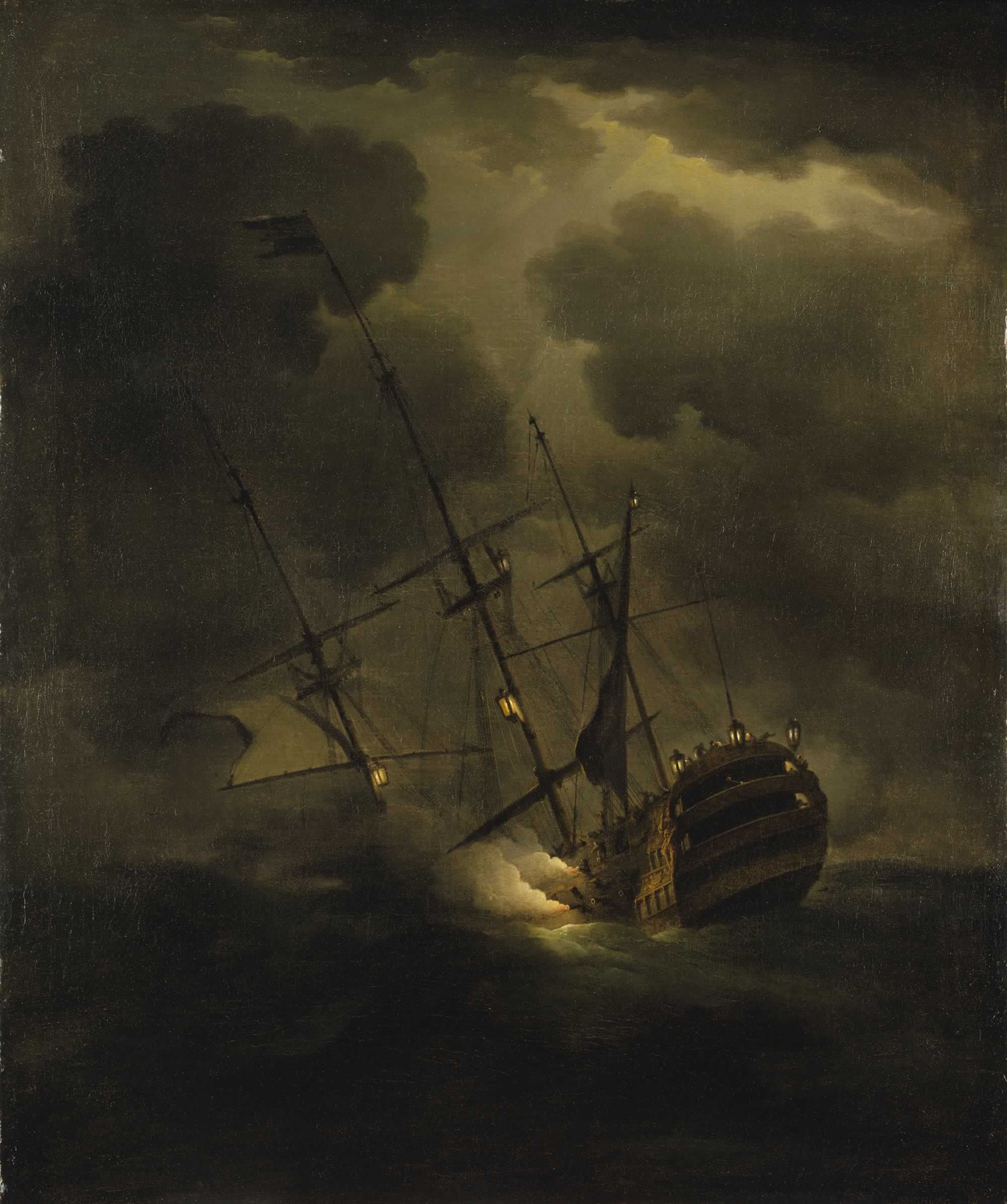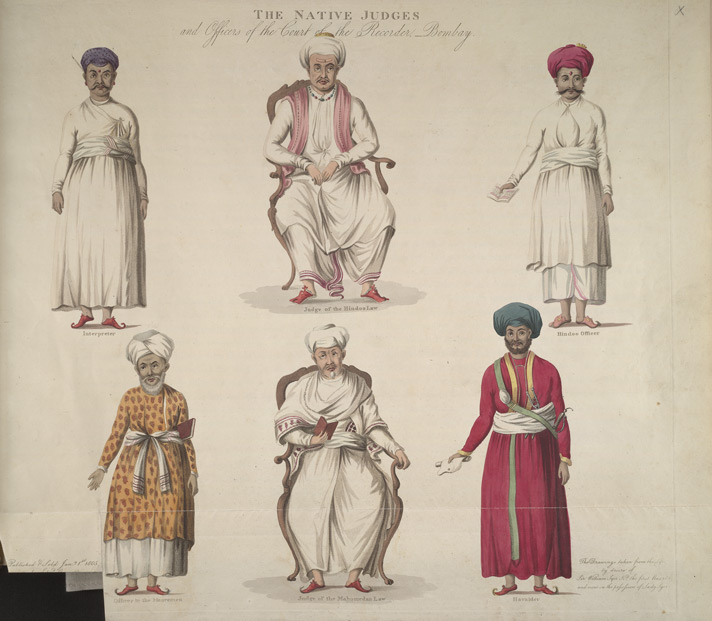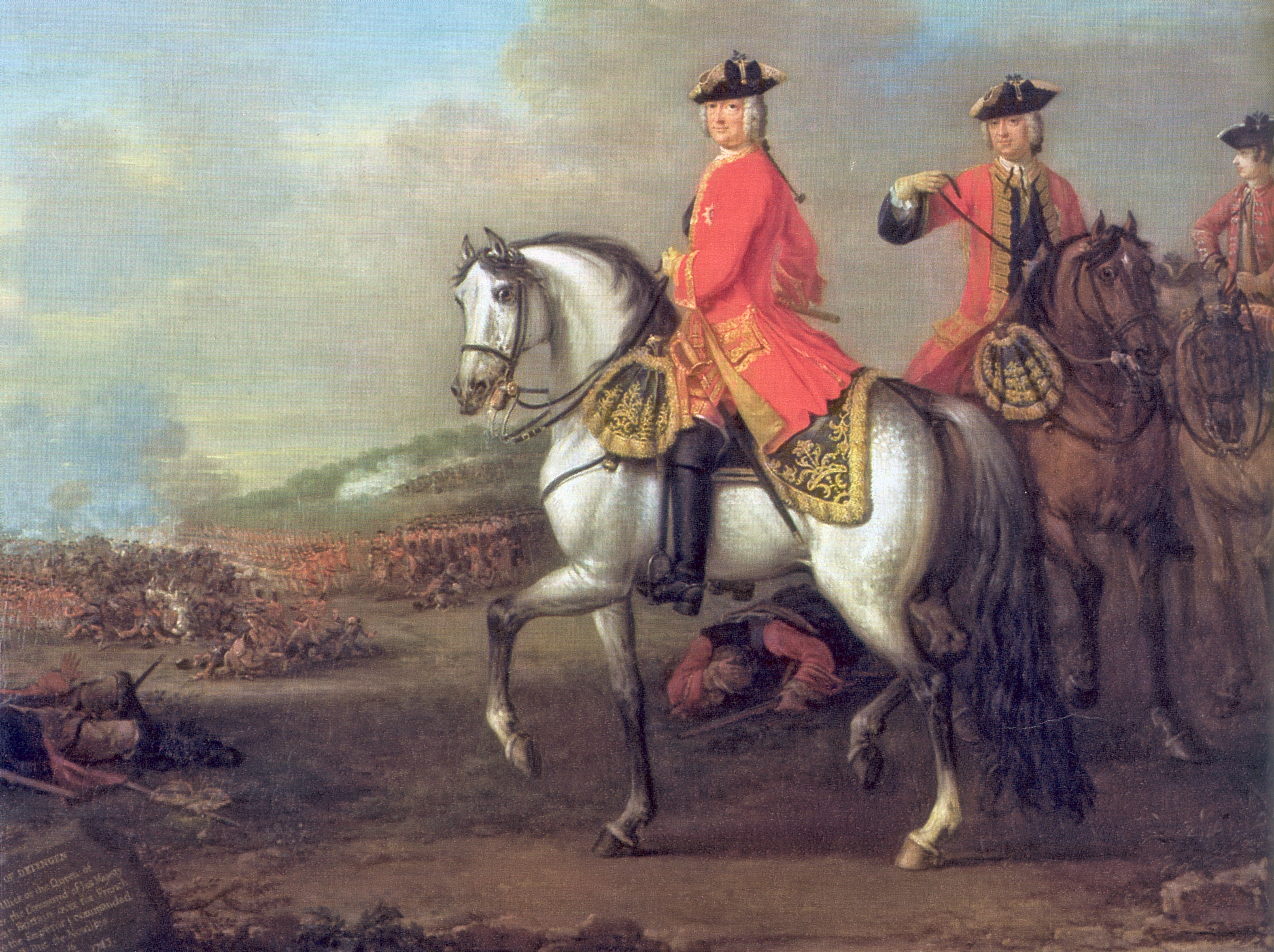|
Portrait Of George II
''Portrait of George II'' is a 1744 portrait painting by the British artist Thomas Hudson (painter), Thomas Hudson depicting George II of Great Britain. The German-born George reigned as Kingdom of Great Britain, King of Great Britain, Kingdom of Ireland, King of Ireland and Elector of Hanover from 1737 to 1760. He notably led Pragmatic Army, Allied troops to victory at the Battle of Dettingen the previous year, an event commemorated in a painting by John Wootton. This portrait features the king sitting on his throne with his crown and other symbols of sovereignty. It was commissioned by the judge John Willes (judge), John Willes for the Court of Common Pleas (England), Court of Common Pleas in Westminster. Today the painting is the collection of the National Portrait Gallery, London, National Portrait Gallery having been acquired in 1883.https://www.npg.org.uk/collections/search/portraitExtended/mw02450/King-George-II?search=ap&npgno=670&eDate=&lDate= References Bibliography ... [...More Info...] [...Related Items...] OR: [Wikipedia] [Google] [Baidu] |
Thomas Hudson (painter)
Thomas Hudson (1701 – 1779) was an English painter, almost exclusively of portraits. Life Hudson was born in Devon, in 1701. He studied under Jonathan Richardson (painter), Jonathan RichardsonJonathon Richardson , London - National Portrait Gallery, accessed January 2010. in London and, against the latter's wishes, married Richardson's daughter at some point before 1725. Hudson was most prolific between 1740 and 1760 and, from 1745 until 1755 was the most successful London portraitist. He had many assistants, and employed the specialist drapery painter Joseph Van Aken. Joshua Reynolds, Joseph Wright of Derby, Joseph Wright and the drapery painter Peter Toms (painter), Peter Toms were his students. Hudson visited the Low Countries in 1748 and Italy in 1752. ... [...More Info...] [...Related Items...] OR: [Wikipedia] [Google] [Baidu] |
Throne
A throne is the seat of state of a potentate or dignitary, especially the seat occupied by a sovereign (or viceroy A viceroy () is an official who reigns over a polity in the name of and as the representative of the monarch of the territory. The term derives from the Latin prefix ''vice-'', meaning "in the place of" and the Anglo-Norman ''roy'' (Old Frenc ...) on state occasions; or the seat occupied by a pope or bishop on ceremonial occasions. "Throne" in an abstract sense can also refer to the monarchy itself, an instance of metonymy, and is also used in many expressions such as "power behind the throne, the power behind the throne". A throne is a symbol of divine and secular rule and the establishment of a throne as a defining sign of the claim to power and authority. It can be with a high backrest and feature heraldic animals or other decorations as adornment and as a sign of power and strength. A throne can be placed underneath a canopy or baldachin. The throne can s ... [...More Info...] [...Related Items...] OR: [Wikipedia] [Google] [Baidu] |
18th-century Portraits
The 18th century lasted from 1 January 1701 (represented by the Roman numerals MDCCI) to 31 December 1800 (MDCCC). During the 18th century, elements of Enlightenment thinking culminated in the Atlantic Revolutions. Revolutions began to challenge the legitimacy of monarchical and aristocratic power structures. The Industrial Revolution began mid-century, leading to radical changes in human society and the environment. The European colonization of the Americas and other parts of the world intensified and associated mass migrations of people grew in size as part of the Age of Sail. During the century, slave trading expanded across the shores of the Atlantic Ocean, while declining in Russia and China. Western historians have occasionally defined the 18th century otherwise for the purposes of their work. For example, the "short" 18th century may be defined as 1715–1789, denoting the period of time between the death of Louis XIV of France and the start of the French Revolution ... [...More Info...] [...Related Items...] OR: [Wikipedia] [Google] [Baidu] |
Portraits Of Men
A portrait is a painting, photograph, sculpture, or other artistic representation of a person, in which the face is always predominant. In arts, a portrait may be represented as half body and even full body. If the subject in full body better represents personality and mood, this type of presentation may be chosen. The intent is to display the likeness, personality Personality is any person's collection of interrelated behavioral, cognitive, and emotional patterns that comprise a person’s unique adjustment to life. These interrelated patterns are relatively stable, but can change over long time per ..., and even the mood of the person. For this reason, in photography a portrait is generally not a Snapshot (photography), snapshot, but a composed image of a person in a still position. A portrait often shows a person looking directly at the painter or photographer, to most successfully engage the subject with the viewer, but portrait may be represented as a profile (from ... [...More Info...] [...Related Items...] OR: [Wikipedia] [Google] [Baidu] |
Oil On Canvas Paintings
An oil is any nonpolar chemical substance that is composed primarily of hydrocarbons and is hydrophobic (does not mix with water) and lipophilic (mixes with other oils). Oils are usually flammable and surface active. Most oils are unsaturated lipids that are liquid at room temperature. The general definition of oil includes classes of chemical compounds that may be otherwise unrelated in structure, properties, and uses. Oils may be animal, vegetable, or petrochemical in origin, and may be volatile or non-volatile. They are used for food (e.g., olive oil), fuel (e.g., heating oil), medical purposes (e.g., mineral oil), lubrication (e.g. motor oil), and the manufacture of many types of paints, plastics, and other materials. Specially prepared oils are used in some religious ceremonies and rituals as purifying agents. Etymology First attested in English 1176, the word ''oil'' comes from Old French ''oile'', from -4; we might wonder whether there's a point at which it's a ... [...More Info...] [...Related Items...] OR: [Wikipedia] [Google] [Baidu] |
Paintings In The National Portrait Gallery, London
Painting is a Visual arts, visual art, which is characterized by the practice of applying paint, pigment, color or other medium to a solid surface (called "matrix" or "Support (art), support"). The medium is commonly applied to the base with a brush. Other implements, such as palette knives, sponges, airbrushes, the artist's fingers, or even a dripping technique that uses gravity may be used. One who produces paintings is called a painter. In art, the term "painting" describes both the act and the result of the action (the final work is called "a painting"). The support for paintings includes such surfaces as walls, paper, canvas, wood, glass, lacquer, pottery, leaf, copper and concrete, and the painting may incorporate other materials, in single or multiple form, including sand, clay, paper, cardboard, newspaper, plaster, gold leaf, and even entire objects. Painting is an important form of visual arts, visual art, bringing in elements such as drawing, Composition (visual art ... [...More Info...] [...Related Items...] OR: [Wikipedia] [Google] [Baidu] |
1744 Paintings
Events January–March * January 6 – The Royal Navy ship ''Bacchus'' engages the Spanish Navy privateer ''Begona'', and sinks it; 90 of the 120 Spanish sailors die, but 30 of the crew are rescued. * January 24 – The Dagohoy rebellion in the Philippines begins, with the killing of Father Giuseppe Lamberti. * February 22– 23 – Battle of Toulon: The British fleet is defeated by a joint Franco-Spanish fleet. * February 27 – Violent storms frustrate a planned French invasion of Britain. * March 1 (approximately) – The Great Comet of 1744, one of the brightest ever seen, reaches perihelion. * March 13 – The British ship ''Betty'' capsizes and sinks off of the Gold Coast (modern-day Ghana) near Anomabu. More than 200 people on board die, although there are a few survivors. * March 15 – France declares war on Great Britain. April–June * April – '' The Female Spectator'' (a monthly) is founded by Eliza Haywo ... [...More Info...] [...Related Items...] OR: [Wikipedia] [Google] [Baidu] |
Westminster
Westminster is the main settlement of the City of Westminster in Central London, Central London, England. It extends from the River Thames to Oxford Street and has many famous landmarks, including the Palace of Westminster, Buckingham Palace, Westminster Abbey, Westminster Cathedral, Trafalgar Square and much of the West End of London, West End cultural centre including the entertainment precinct of West End theatre. The name () originated from the informal description of the abbey church and royal peculiar of St Peter's (Westminster Abbey), west of the City of London (until the English Reformation there was also an Eastminster abbey, on the other side of the City of London, in the East End of London). The abbey's origins date from between the 7th and 10th centuries, but it rose to national prominence when rebuilt by Edward the Confessor in the 11th century. With the development of the old palace alongside the abbey, Westminster has been the home of Governance of England, Engla ... [...More Info...] [...Related Items...] OR: [Wikipedia] [Google] [Baidu] |
Court Of Common Pleas (England)
The Court of Common Pleas, or Common Bench, was a common law court (law), court in the English legal system that covered "common pleas"; actions between subject and subject, which did not concern the Monarchy of the United Kingdom, king. Created in the late 12th to early 13th century after splitting from the Exchequer of Pleas, the Common Pleas served as one of the central English courts for around 600 years. Authorised by Magna Carta to sit in a fixed location, the Common Pleas sat in Westminster Hall for its entire existence, joined by the Exchequer of Pleas and Court of King's Bench (England), Court of King's Bench. The court's jurisdiction was gradually undercut by the King's Bench and Exchequer of Pleas with legal fictions, the Bill of Middlesex and Writ of Quominus respectively. The Common Pleas maintained its exclusive jurisdiction over matters of real property until its dissolution, and due to its wide remit was considered by Edward Coke, Sir Edward Coke to be the "lock ... [...More Info...] [...Related Items...] OR: [Wikipedia] [Google] [Baidu] |
John Willes (judge)
Sir John Willes (29 November 168515 December 1761) was an English lawyer and politician who sat in the House of Commons from 1724 to 1737. He was the longest-serving Chief Justice of the Court of Common Pleas since the 15th century, serving 24 years. Life Willes was born at Bishop's Itchington in Warwickshire; his father, the Reverend John Willes, vicar of the parish, was a younger son of the long-established Willes family of Newbold Comyn. Dr. Edward Willes, Bishop of Bath and Wells, was his brother. Their mother was Anne (or Mary) Walker, daughter of Sir William Walker, who was three times Mayor of Oxford between 1674 and 1685. Willes was educated at Lichfield Grammar School and matriculated at Trinity College, Oxford on 28 November 1700, aged 14. He was also elected a fellow of All Souls. While he was a student at Oxford he got into serious trouble for publishing pamphlets about the Government which were arguably seditious, and was threatened with prosecution as a res ... [...More Info...] [...Related Items...] OR: [Wikipedia] [Google] [Baidu] |
Judge
A judge is a person who wiktionary:preside, presides over court proceedings, either alone or as a part of a judicial panel. In an adversarial system, the judge hears all the witnesses and any other Evidence (law), evidence presented by the barristers or solicitors of the case, assesses the credibility and arguments of the parties, and then issues a Court order, ruling in the Case law, case based on their Judicial interpretation, interpretation of the law and their own personal judgment. A judge is expected to conduct the trial impartially and, typically, in an in open court, open court. The powers, functions, method of appointment, discipline, and training of judges vary widely across different jurisdictions. In some jurisdictions, the judge's powers may be shared with a jury. In inquisitorial systems of criminal investigation, a judge might also be an examining magistrate. The presiding judge ensures that all court proceedings are lawful and orderly. Powers and functions The ult ... [...More Info...] [...Related Items...] OR: [Wikipedia] [Google] [Baidu] |
John Wootton
John Wootton (c.1686– 13 November 1764)Deuchar, S. (2003). "Wootton, John". Grove Art Online. was an English painter of sporting subjects, battle scenes and landscapes, and illustrator. Life Born in Snitterfield, Warwickshire (near Stratford-upon-Avon), he is best remembered as a pioneer in the painting of sporting subjects – together with Peter Tillemans and James Seymour – and was considered the finest practitioner of the genre in his day. As such, his paintings were very fashionable and were sought after by those among the highest strata of the British society. These included figures such as George II of Great Britain, Frederick, Prince of Wales, and the Duke of Marlborough. It is likely that he received artistic training from Jan Wyck before 1700. Wootton may have begun life as a page to the family of the Dukes of Beaufort. His earliest surviving dated work is the equine portrait ''Bonny Black'' (1711). He remained active until his death in 1764, based in the cap ... [...More Info...] [...Related Items...] OR: [Wikipedia] [Google] [Baidu] |








